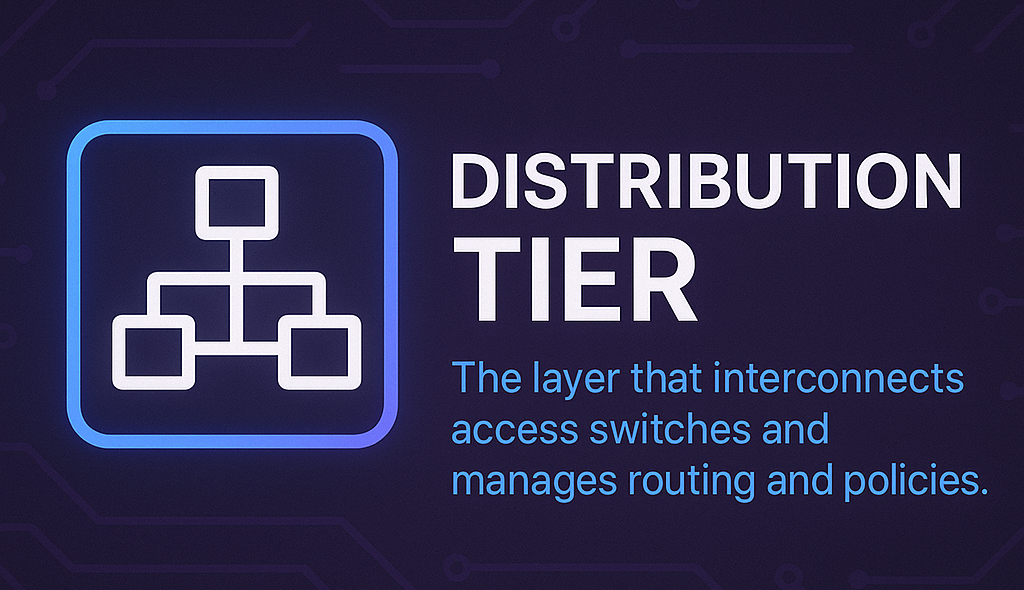
Distribution Tier
In a three-tier network model, the Distribution Tier is the linchpin that translates broad design goals into enforceable policies and resilient, high-performance connectivity. Here’s how adopting a 3-tier approach helps you architect—and optimize—your distribution layer:
Clear Separation of Responsibilities
Access vs. Distribution vs. Core: By isolating the distribution tier from the access and core layers, you keep endpoint connectivity, policy enforcement, and high-speed forwarding each in their own domain.
Easier Troubleshooting: When performance or security issues arise you know exactly which devices to examine—distribution switches handle routing, quality-of-service (QoS), and filtering, rather than end-user or backbone equipment.
Scalability Through Modular Design
Aggregation Points: Distribution switches aggregate dozens (or hundreds) of access switches. This means you can grow each layer independently—add more access switches to a given distribution block without touching your core.
Logical Grouping: You can group VLANs, security zones, or even data-center pods under different distribution devices, then expand each group as needed.
Policy Enforcement & Security
Routing & Segmentation: The distribution tier runs dynamic routing protocols (OSPF, EIGRP, etc.), inter-VLAN routing, and enforces ACLs or firewall policies. That keeps malicious traffic or broadcast storms from propagating further.
QoS Implementation Point: Prioritize voice, video, or critical application traffic where you need it—distribution switches mark and police traffic flows so that SLAs are met before packets ever hit the core.
Redundancy & High Availability
Link Aggregation (LACP/MLAG): Bundle multiple links between access and distribution devices to boost throughput and eliminate single points of failure.
First-Hop Redundancy: Protocols like VRRP, HSRP or GLBP at the distribution tier ensure that if one distribution switch fails, its peer takes over immediately, keeping access-layer devices online.
Simplified Management & Automation
Consistent Templates: Since distribution switches share a common role, you can push standardized OS images, VLAN templates, QoS policies and security profiles via an automation tool (Ansible, Cisco DNA Center, etc.).
Health Monitoring: Focus your SNMP/NetFlow collectors on distribution devices to get meaningful traffic and performance metrics without drowning in per-access-switch noise.
Optimized Traffic Flows
Design for North-South vs. East-West: In campus or data-center environments, the distribution tier can be optimized to keep intra-building (east-west) traffic local, while sending inter-building or Internet-bound (north-south) traffic upwards.
Spanning-Tree Tuning: Run Rapid-PVST+ or MST at the distribution level, shaping your loop-avoidance topology to maximize link utilization and minimize convergence times.